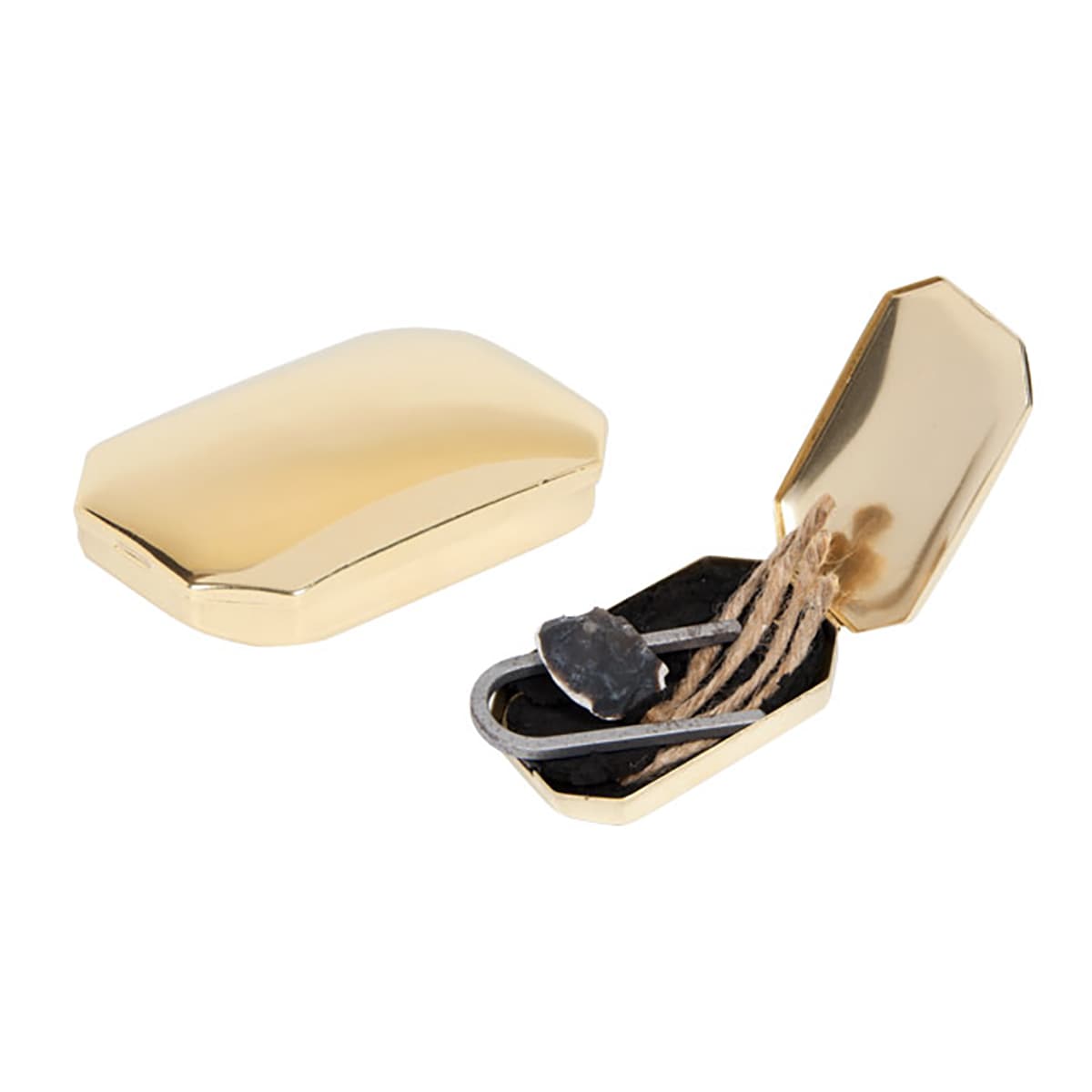How To: Hudson's Bay Flint And Steel Kit
In this review I will be taking a look at how to use the Hudson Bay Flint and Steel Fire Kit to start a fire.
The kit consists of a traditional Hudson’s Bay Voyageur era tin with a 6x magnifying glass in the lid. During sunny days, the magnifying glass can be used to start a fire, or light a pipe, saving flint and your efforts for times when the sun is not available to help out. Inside the tin there is a steel striker, a piece of flint, a bundle of char cloth and some jute rope. There is quite a bit more char cloth than jute rope but it's a lot easier to find natural tinder to substitute for the rope than it is to make char cloth, especially out in the field.
There is a bit more of a learning curve to getting a fire started compared to a modern ferrocerium rod but the stages are similar; you need a spark, a medium to catch the spark and create an ember, and finally some tinder to place the ember into and to develop a flame, which would be used to catch your kindling on fire.
The first step is to take a few strands of jute rope, pull the fibres apart and fluff them up to get the maximum amount of surface area and make a depression in the centre for the char cloth ember. The larger the bundle and finer the strands the better. The next step is to place a quarter size piece of char cloth on top of the flint close to the edge, then strike the thin outside edge of the flint with the steel - not too hard, as you want the small, relatively weak sparks to land on top of the char cloth.
I found that the sparks will land on the cloth and then appear to do nothing, but if you give it a blow the tiny spark will start to catch the surrounding cloth and grow larger. If you keep blowing the ember will start to grow, and you can then place it into your jute tinder bundle as quickly as possible, close the bundle around the ember so there is more tinder material touching the ember, and keep blowing so the char cloth will stay glowing hot and eventually catch the tinder on fire. It definitely helps to have a large bundle of fine kindling ready to take the flame (such as thin dry spruce branches), as the tinder bundle will not burn for very long if it's not vary large.
You can also find substitutes in the bush for the char cloth such as tinder fungus, horseshoe fungus and dry rotten punky wood. Substitutes for the jute rope include fine shavings of tree bark such as cedar bark, milkweed seed pods, poplar catkins, or dried grass that have been crumpled to break apart all the fibres. With a bit of practice and trial and error, this becomes a fairly easy and much more interesting method of starting a fire.
The container tin is available is brass or tin, and can store a fair bit of both char cloth and jute - enough for many fires (depending on your level of skill).
So if doing things old-school is your cup of tea, or if you prefer to keep your fire making skills honed for when and if modern materials are unavailable, check out our Hudson’s Bay Flint and Steel Fire Kits


